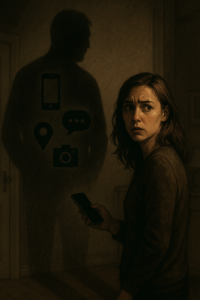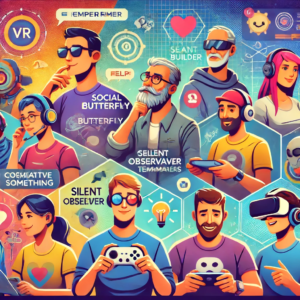
Cyberbullying in Australian Schools: Breaking the Cycle
Cyberbullying has reached over half of young Australians – in fact, about 51% of Aussie youths (aged 12–25) have experienced some form of cyberbullying in their lifetime
. Unlike old-school bullying that stopped at the school gate, online abuse can follow teens 24/7 via smartphones and social media. The mental health impact on children and teenagers is profound. Victims commonly suffer depression, anxiety, low self-esteem, and some are driven to self-harm. Alarmingly, cyberbullying has been linked to youth suicides in Australia – research suggests it’s a contributing factor in at least 3 youth suicides every week
. The 2018 suicide of 14-year-old “Dolly” Everett, for example, who was mercilessly bullied online, shocked the nation and sparked an anti-bullying campaign
. Schools, parents, and legislators are now grappling with how to better protect kids in this always-online generation.
Common Misconceptions:
“Bullying is a normal part of growing up – kids will be kids.” – Reality: Being bullied is not a normal or healthy rite of passage. The trauma from cyberbullying can derail a child’s development, leading to chronic mental health issues. Accepting bullying as “normal” allows real harm to continue unchecked.
“Just take away the phone or ban kids from social media to stop cyberbullying.” – Reality: Simply banning devices is a band-aid solution. Bullying behavior can migrate to other platforms or resume once the ban is lifted. Also, completely cutting teens off from online social life can isolate them further. A more effective approach is teaching respectful online behavior and supervising kids’ digital activity, coupled with robust interventions when bullying occurs.
“If a child is being bullied online, they should just ignore it or toughen up.” – Reality: Ignoring sustained harassment is not psychologically feasible for most young people. Unlike in-person bullying, online cruelty leaves a permanent record (posts, screenshots) that can haunt victims. Telling a struggling teen to “toughen up” dismisses their pain; it’s akin to telling someone with a broken leg to just walk it off. Instead, adults need to intervene and provide support.
“Cyberbullying isn’t as serious as physical bullying since there’s no actual violence.” – Reality: Emotional and mental violence is serious. Victims of cyberbullying often report feeling unsafe, even physically – they may fear going to school or develop psychosomatic symptoms. The lack of a physical bruise doesn’t mean there isn’t severe harm. In some cases, the relentless psychological torture of cyberbullying has led to tragedies like self-harm and suicide.
Key Talking Points for a Full Blog Post:
Scope of the Problem: Start with recent statistics and maybe a narrative. For instance: “According to headspace, 53% of young Australians have been cyberbullied
- . Imagine half of our kids carrying that weight.” Highlight that cyberbullying can happen via social networks, gaming platforms, texting – and often goes unreported (many teens don’t tell adults until it becomes unbearable).
Mental Health Repercussions: Dive into how cyberbullying affects youth mental health. You might cite that youth who are cyberbullied are at much higher risk of depression, anxiety, and suicidal ideation
- . Describe symptoms: trouble sleeping, withdrawal from friends, drop in academic performance, self-harm. Include Dolly’s story or others to put a human face on the statistics – e.g. how Dolly’s parents noted she felt she had “no other option” to escape the torment.
Legal and School Responses: Explain what measures are in place. In Australia, there are actually laws and policies: for example, under the Enhancing Online Safety Act (now part of the Online Safety Act), the eSafety Commissioner can demand social media sites remove cyberbullying material targeting under-18s. Many states have introduced tougher penalties for serious cyberbullying (some classify severe cyberbullying of children as a crime). Schools have anti-bullying programs and the National Safe Schools Framework. Yet enforcement is inconsistent. Talk about any high-profile initiatives (e.g. Queensland’s “Dolly’s Law” discussions to strengthen consequences for cyberbullies, or phone bans during school hours in some states).
Misconceptions & Challenges: Address the blame that sometimes gets placed on victims or technology. For instance, clarify why telling a teen to just get off social media is overly simplistic – the victim should not have to disappear; the behavior needs addressing. Discuss how some parents or teachers might underestimate cyberbullying because “it’s not physical,” and counter that with expert opinions that psychological harm can be equally devastating.
What’s Needed (Reform and Support): Advocate for a multipronged approach. This might include: better education – teach digital empathy and resilience in the curriculum; improved reporting mechanisms – make it easy and safe for students to report cyberbullying (anonymously if needed) without fear of repercussion; and legal reforms – perhaps a national consistency in cyberbullying laws so that all states treat serious cases with the same gravity. Mention that Australia’s government and child-safety groups are actively working on this – e.g. the eSafety Commissioner runs educational programs and has a youth advisory council. Emphasize mental health support for victims: schools should have counselors trained in online abuse trauma, and campaigns like #SpeakEvenIfYourVoiceShakes (hypothetical) to encourage reporting. End on a hopeful note: with awareness and collective effort (teachers, parents, policymakers, students themselves), we can curb cyberbullying and create safer digital spaces for kids.
Image Prompt: A vivid illustration of a school hallway where the shadows cast on the wall show students on their phones. In the foreground, a teenage girl sits on the floor looking at her phone with tearful eyes, while ghostly text messages (“You’re worthless”, “Nobody likes you”) float around her. Behind her, a faint silhouette of the Australian map or flag is visible on the wall, symbolizing the national scope of the issue. The style is a mix of realistic and graphic, with muted colors except for the glowing phone screen and message texts.




